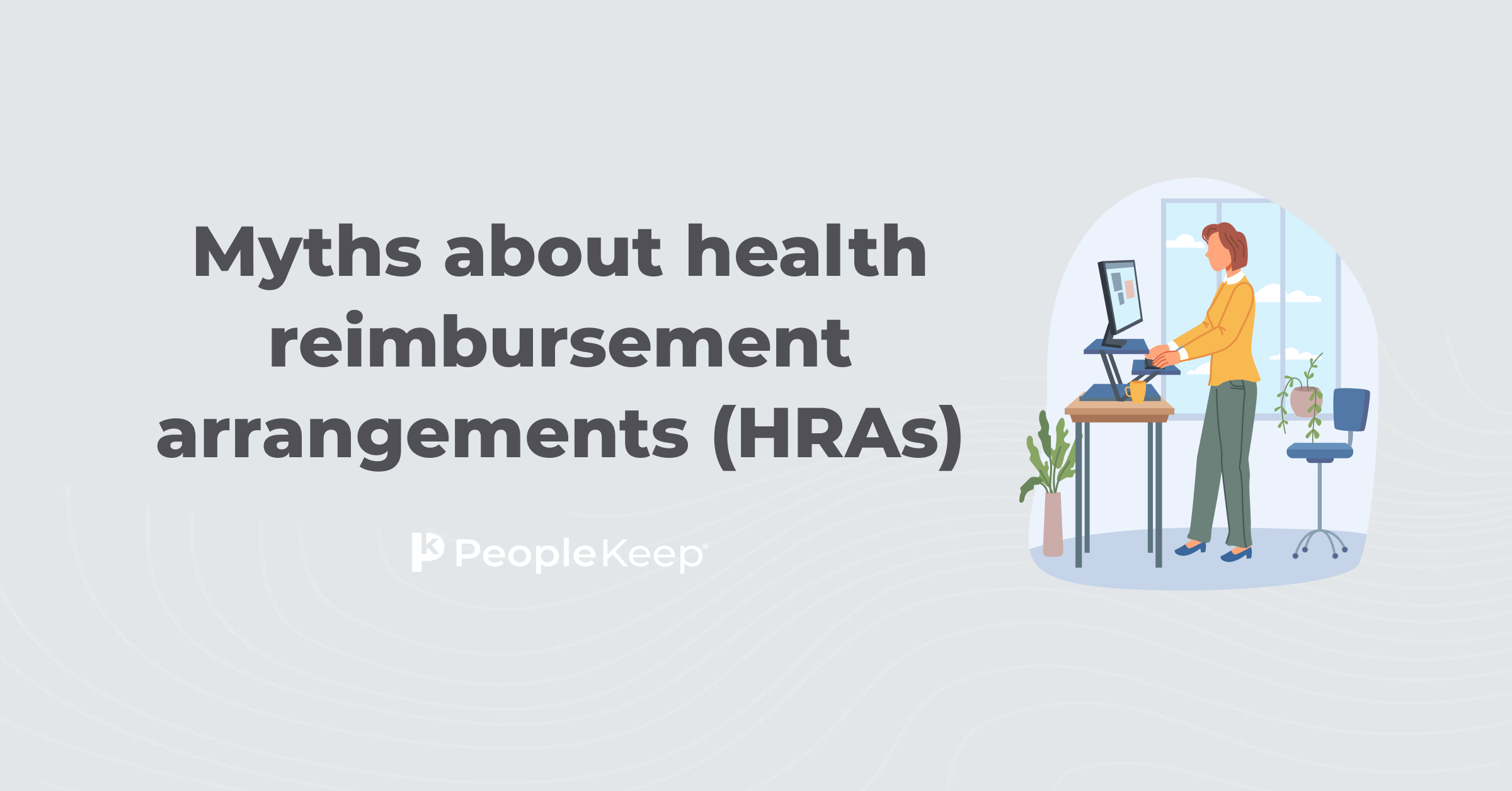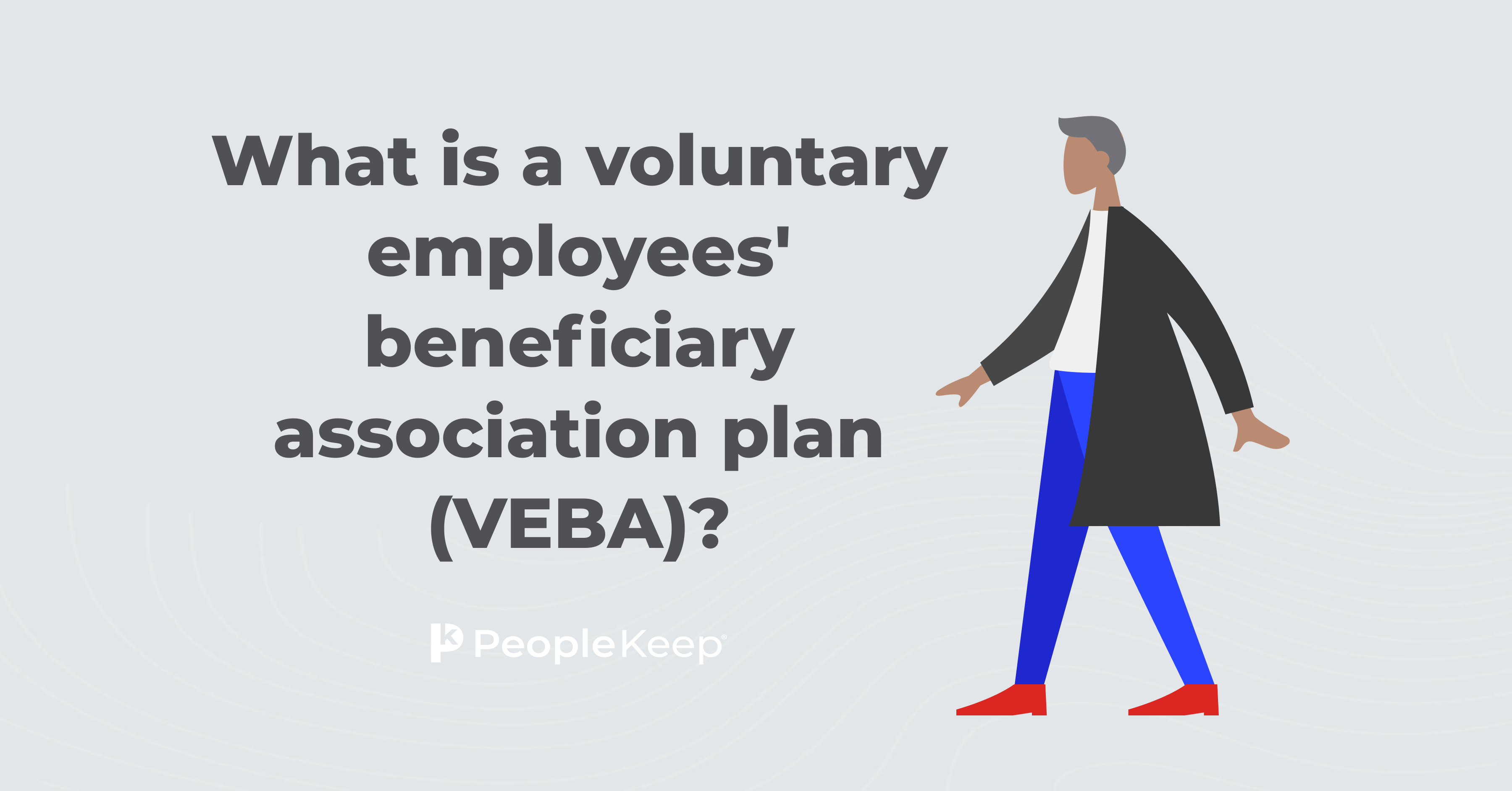How to lower health insurance costs with an integrated HRA
By Elizabeth Walker on February 25, 2022 at 9:21 AM
Organizations of all sizes are feeling the pressure of rising healthcare costs. And with deductibles increasing over 68.4% over the past ten years, it’s not surprising that individuals and employees are feeling the pain too.
Employers know that shifting a more significant portion of the health insurance costs to their employees can make providing group health insurance more affordable; however, it can also lower their workforce’s morale, making it harder to attract and retain top talent. But if you eliminate a group health benefit entirely, employees won’t be happy. So what can you do to keep costs affordable while also offering quality benefits?
For many employers, health reimbursement arrangements (HRAs) are one of the best options to offset rising healthcare costs and provide employees with tax-advantaged health benefits. If you already have a group health insurance plan, then a group coverage HRA (GCHRA), or an integrated HRA, is even more advantageous.
In this blog, we’ll go into more detail on healthcare costs and integrated HRAs, including:
- Why health insurance is so expensive
- Types of health insurance costs
- How to lower health insurance costs
- Taking control of your health benefit with a group coverage HRA
Why health insurance is so expensive
The main reason that healthcare is so pricey is that it’s based on a for-profit insurance system. In the U.S., private health insurance companies administer most insurance plans, leaving individuals footing the majority of the bill, even if their employer subsidizes a portion of the cost.
While the Affordable Care Act (ACA) focused on broadening health coverage, it still maintains competition among healthcare providers, which keeps prices pushing upwards.
According to Investopedia, here are six underlying reasons for the high cost of healthcare:
- Multiple conflicting healthcare systems
- Rising drug costs
- Increased pay for doctors and nurses
- For-profit hospital centers
- Defensive medicine practices
- Various prices of healthcare services
The high cost of healthcare affects everyone, whether they’re sick or not. Salaries for workers have risen over the years, but net pay hasn’t increased enough to keep up with rising health insurance expenses. Until these level out, it's essential to research affordable health insurance coverage that will meet your employees’ needs.
See what you can expect to pay for health insurance in your state with our chart
Types of health insurance costs
When choosing a health plan, it’s a good idea to think about the diversity of your workforce, their healthcare needs, and your total healthcare costs—not just the cost of the health insurance premium. Out-of-pocket costs have a big impact on your total health benefit expenses—sometimes more than the premium itself.
Beyond the monthly premium, typical health insurance costs include:
- Deductibles: The amount you have to spend on covered health services before your insurance company starts paying (except preventive services).
- Copayments: The dollar amount you’ll pay your healthcare provider for a covered service, even if you’ve already met your deductible.
- Coinsurance: The percentage of costs of covered healthcare service you pay after you’ve met your deductible.
- Out-of-pocket maximum: The most you have to spend on covered services in a year. After you reach this amount, the insurance company pays 100% for covered services.
To pick the best health plans for your organization, you’ll need to consider the type of workforce you have, including age, your overall health benefit budget, and the most likely medical care they’ll need throughout the year.
How to lower health insurance costs
Health insurance coverage should be affordable to both employers and employees—but cutting costs for your business shouldn’t come at the expense of your employees. By picking plans that work for your business—and communicating to your employees, so they understand their plan options—they’ll get more from their coverage and will be more likely to stick around.
If you’re looking to lower your overall healthcare costs, the three strategies we discuss below are a good place to start.
Switch to a high deductible health plan (HDHP)
If your workforce consists mostly of younger and healthier employees, you may want to offer a Bronze plan. They are traditionally HDHPs and have lower premium plans on the Marketplace. You can also combine an HDHP with a health savings account (HSA) or an integrated HRA to provide more financial help, but at a lower cost for your business.
Promote a healthy workforce culture
Finding ways to help your employees stay healthy is in your company’s best interest. According to the CDC, offering employee wellness programs provide benefits such as increasing healthy behaviors, improving health knowledge, and encouraging employees to get preventive health screenings. Having a healthier overall workforce can reduce what you spend on healthcare costs for not just your organization, but for your employees as well.
Reduce administrative costs
The time and labor involved with managing healthcare plans are often the organizations’ biggest hassle. That’s why it’s worth looking into software solutions that can help managers administer and report healthcare data accurately. For example, PeopleKeep’s software is the perfect solution to help you administer your HRA.
Take control of your health benefit with a group coverage HRA
If you’ve exhausted all the previous options and are still looking to save money, consider an HRA. With an HRA, employers have more flexibility when designing their benefits package and control costs. For example, employers can choose to offer an HRA as a standalone health benefit to cover individual insurance premiums, or can integrate an HRA alongside their group plan to cover more of their employees' expenses.
With an integrated HRA, also known as a GCHRA, organizations can reduce insurance costs by switching to an HDHP and giving employees a monthly tax-free allowance to get reimbursed for their out-of-pocket costs, such as copays and other qualified medical expenses.
This allows employers to cut the amount they spend on group health coverage while giving employees the financial help they need to cover their medical costs. They’re an excellent option for employers looking to save money while keeping the employee’s coverage at top-quality.
Employers can further control costs with the following GCHRA features:
- Explanation of Benefits (EOB): Employers can limit eligible expenses to only those their group health insurance provider allows by requiring an EOB with employees’ expense documentation
- Cost-sharing: Cost-sharing reduces unnecessary medical procedures by making employees responsible for paying a certain percentage of their own expenses
- HRA deductible: An HRA deductible can reduce employer liability by making employees responsible for all expenses up to a predefined threshold
Employers also have the flexibility to decide how they want their GCHRA to be structured by setting employee classes. Employee classes separate employees into groups by legitimate job-based criteria, such as full- and part-time status. Employees in different classes can be offered different allowance amounts.
Learn more about the GCHRA in our one-page reference guide
Conclusion
Finding affordable and quality healthcare coverage will always remain a challenge, but employers shouldn’t feel defeated. There are options to soften the blow of insurance rate increases as much as possible. Whether you are looking to maintain current benefit levels at a lower cost or switch to an HDHP, a GCHRA is a great way to help you meet your goals.
If you’re ready to get started, PeopleKeep can help you cut your organization’s healthcare costs. Contact our personalized benefits advisors, and they’ll get you set up with everything you need to succeed.
This article was originally published on October 1, 2020. It was last updated on February 25, 2022.
Check out more resources
See these related articles

Integrated vs. stand-alone HRA
In this article, we’ll go into detail on integrated HRAs and stand-alone HRAs and the different types that are commonly offered.

Myths about health reimbursement arrangements (HRAs)
Learn the truth about health reimbursement arrangements (HRAs) with this informative guide. Bust the myths and understand how HRAs can benefit you.

What is a voluntary employees' beneficiary association plan (VEBA)?
In this article, we’ll go over the basics of a VEBA, how they work, their pros and cons, and how they differ from health reimbursement arrangements (HRAs).


